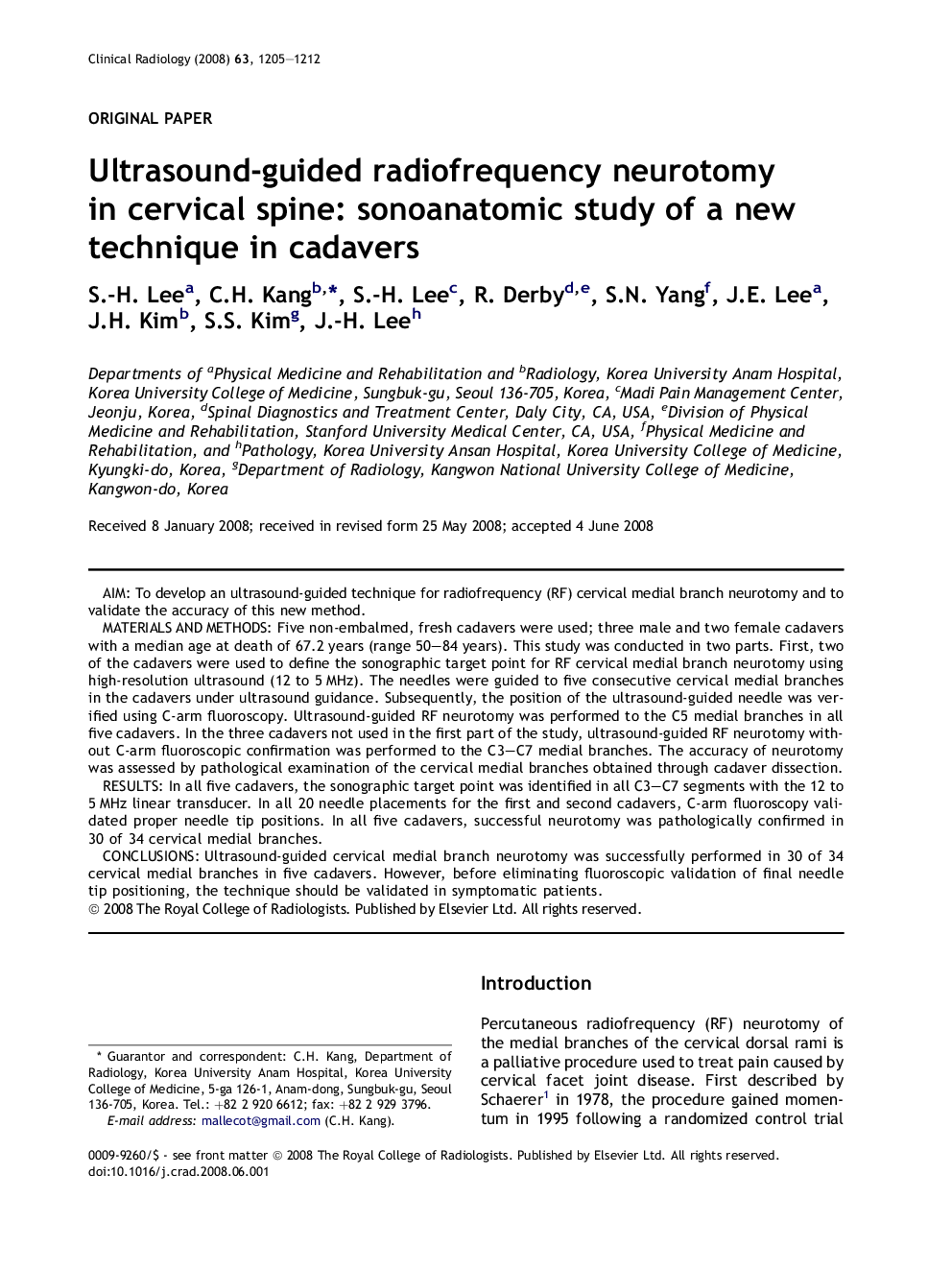| Article ID | Journal | Published Year | Pages | File Type |
|---|---|---|---|---|
| 3983123 | Clinical Radiology | 2008 | 8 Pages |
AimTo develop an ultrasound-guided technique for radiofrequency (RF) cervical medial branch neurotomy and to validate the accuracy of this new method.Materials and methodsFive non-embalmed, fresh cadavers were used; three male and two female cadavers with a median age at death of 67.2 years (range 50–84 years). This study was conducted in two parts. First, two of the cadavers were used to define the sonographic target point for RF cervical medial branch neurotomy using high-resolution ultrasound (12 to 5 MHz). The needles were guided to five consecutive cervical medial branches in the cadavers under ultrasound guidance. Subsequently, the position of the ultrasound-guided needle was verified using C-arm fluoroscopy. Ultrasound-guided RF neurotomy was performed to the C5 medial branches in all five cadavers. In the three cadavers not used in the first part of the study, ultrasound-guided RF neurotomy without C-arm fluoroscopic confirmation was performed to the C3–C7 medial branches. The accuracy of neurotomy was assessed by pathological examination of the cervical medial branches obtained through cadaver dissection.ResultsIn all five cadavers, the sonographic target point was identified in all C3–C7 segments with the 12 to 5 MHz linear transducer. In all 20 needle placements for the first and second cadavers, C-arm fluoroscopy validated proper needle tip positions. In all five cadavers, successful neurotomy was pathologically confirmed in 30 of 34 cervical medial branches.ConclusionsUltrasound-guided cervical medial branch neurotomy was successfully performed in 30 of 34 cervical medial branches in five cadavers. However, before eliminating fluoroscopic validation of final needle tip positioning, the technique should be validated in symptomatic patients.
